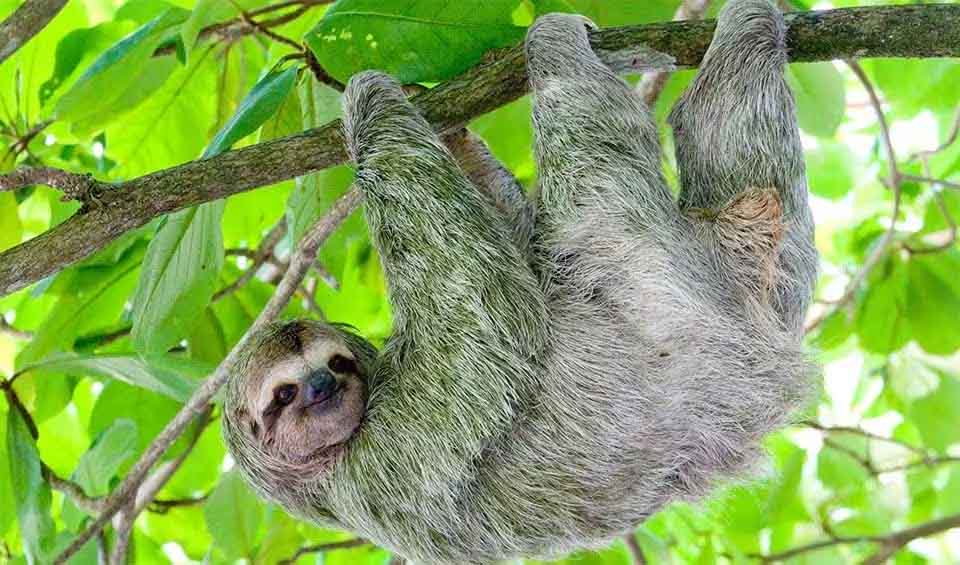Bradypus – Three-toed sloths
When it comes to sloths, there are degrees of slothfulness, and three-toed sloths are the most slothful (SLOW) of all!
One of the most remarkable aspects of three-toed sloths is their specialized diet, primarily consisting of plants with tough, fibrous leaves that are low in nutrition and energy. Sloths have evolved a remarkable strategy to cope with this dietary challenge: they sleep for an astonishing 15 to 20 hours per day. Even when awake, they are typically extremely slow-moving, spending most of their time lounging in the branches of trees.
The leisurely pace of three-toed sloths is further accentuated by their near-motionless behavior, even when they are awake. This sedentary lifestyle provides them with an energy-saving advantage, allowing them to conserve precious resources in their food-poor environment. Interestingly, the slow-moving nature of sloths often results in algae and other organisms taking up residence in their shaggy fur coats. While this may seem like a disadvantage, the green tint provided by the algae actually helps sloths camouflage themselves among the foliage of trees, providing them with a degree of protection from predators.
In addition to their unique feeding and behavioral adaptations, three-toed sloths possess another remarkable ability: the ability to rotate their heads to an astonishing 270 degrees. This incredible range of motion allows sloths to effectively scan their surroundings for food, predators, and potential mates without having to move their bodies. This adaptation is particularly useful for sloths, as it allows them to maximize their feeding efficiency by reaching nearby leaves without expending unnecessary energy.
Despite their seemingly laid-back lifestyle, three-toed sloths play important roles in their ecosystems as seed dispersers and contributors to nutrient cycling. By consuming leaves and fruits and then dispersing seeds through their feces, sloths help maintain the diversity and structure of tropical forests. Furthermore, their slow-moving behavior and algae-covered fur provide habitats for a variety of organisms, including insects and fungi, further enriching the biodiversity of their environment.
Species in this genus
Maned sloth
So good at staying hidden that even scientists had difficulty studying it for years
Brown-throated sloth
Cute but lazy species harmlessly sleep in the trees for 14 to 16 hours a day
Pale-throated sloth
When it comes to sloths, there are degrees of slothfulness and three-toed sloths are the most slothful (SLOW) of all!



